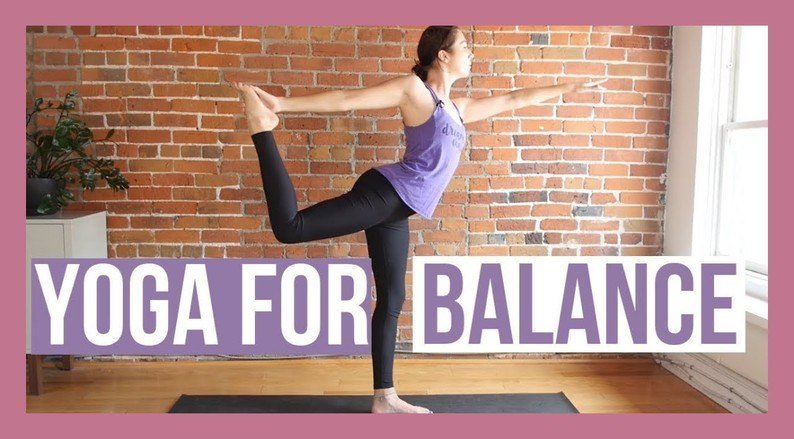Balance is important for all humans. Due to lack of balance different types of accidents may happen. There are two types of balance- physical balance and mental balance, which are very essential for a better life. Balance is equally important like that of flexibility, mobility, and strength to get your body to its optimal stage. Balance has a deeper relation to complete well-being and harmony.
What is Balance?
Balance is a coordination of the physical being as well as the symmetrical equilibrium of the body, from the left to the ride side, the front to the back and the high and low part of the body. In broader concept balance is also defined as the harmony of body and mind. Many people lack this although they may not know it very well. Sometimes, it is observed strength in some parts of the body, especially the parts they use most but equally strong on the other side. For instance, one can bend forward touch the toes, he should also be able to bend backwards accordingly if he has a proper balance on the body.
The Scientifically Proven Way to Build Balance
The issue of balance is not limited to the balancing poses like Garudasana, Vrikshasana or Half Moon Pose, but also falls when you are standing still or in a steady pose, during moving, transitioning, or adjusting. The practice of balance and coordination helps to prevent injury from falling as we age by mastering transition and enhancing power.
Electromyography (EMG) study records electrical activity produced by skeletal muscles, the more activated the toes in standing asana, the greater the lower leg muscle activity. Thus standing poses are preferred for the primary balance muscles.
The following yoga-asanas are is adapted from research and designed to promote motor skills, balance, and functional living by rewiring the previous software of your brain. These asanas require concentration and give a challenge to your musculoskeletal system for the development of the unique neuromuscular pattern.
How Yoga can Improve your Balance?
Regular the practice of yoga asana and pranayama, the body attains strength, flexibility, improve the reflexes, and enhance the body’s physical balance, hormonal balance, and mental equilibrium. Various types of yoga poses are aimed at strengthening the abdominal muscles, back muscles, core and entire body bringing a physical balance of the person. Yoga gives equal benefits for the people of all age group from children to old age group.
Real balance begins with balancing the mind. For that pranayama and meditation are very important.
List of 6 Yoga Poses For Maintaining Balance.
1. Tadasana
This the pose is very simple and easier to perform, yet gives great stretch for the entire body and enhances balance. Start raising hands and heels up. Stretch entire body standing on toes and maintain the balance. Hold the pose for about five breaths.
2. Vrikshasana (Tree Pose)
Vrikshasana is a very popular asana to improve the balance of the body. Start by standing on one leg, the heel of the other foot fixing on the inner thigh and join your hands. Close the eyes (if possible) and hold this position for about five breaths, maintaining awareness on your breaths and balance. Along with improvement on balance, this asana strengthens the legs as well.
3. Garudasana (Eagle Pose)
Garudasana improves balance, discipline, and strength. It requires to focus on the leg muscles, hips and arms. Begin it by standing right leg with a slight bend at the knee, wrap over the front part of the right leg with the left leg and arms are intertwined. During the pose, be aware of breath and balance.
4. Utthita Hasta Padangustasana -A:
This pose is comparatively challenging than other asanas. Use of yoga belts may be helpful for beginners. You can start the asana standing straight and holding the big toe and lift it up in front of you. If you comfortable during your leg is up, you can bend forward to touch the knee with the chin. Hold the position for about five breaths. Repeat it with another leg as well.
Utthita Hasta Padangustasana -B: To get into this asana, it requires a longer time of practice. The steps are similar to the previous one but one difference is- it requires leg extended sidewise holding big toe with hand instead of extending forward. Remain in the pose for about five breaths.
5. Natarajasana (Dancer’s Pose)
Natarajasana improves the balance of the body and upgrades confidence. This pose also helps in readjusting the vertebral column.
Steps for Natarajasana:
Stand straight. Hold the left ankle with the left hand from behind, bending at the knee. Lift the left leg up rounding at back, knee cap pulled up and standing leg straight and strong. The left thigh is extended behind parallel to the floor and right arm stretched forward in front of your torso, thus also parallels to the floor. Hold the position for about 5 breaths. Repeat it on the other side too. If you have difficulty balancing the pose, take the support of the wall.
6. Virabhadrasana C
This asana is also known as Warrior-C which is a great practice of balance.
Steps:
Stand straight and bend down (Uttanasana). Extend one of the legs backwards parallel to the floor, making ninety-degree between the thighs. Liftoff both hands from the floor keeping the body and hands parallel to the floor. Look straight forward. Hold the pose for about 5 breaths and repeat on the other side as well.
